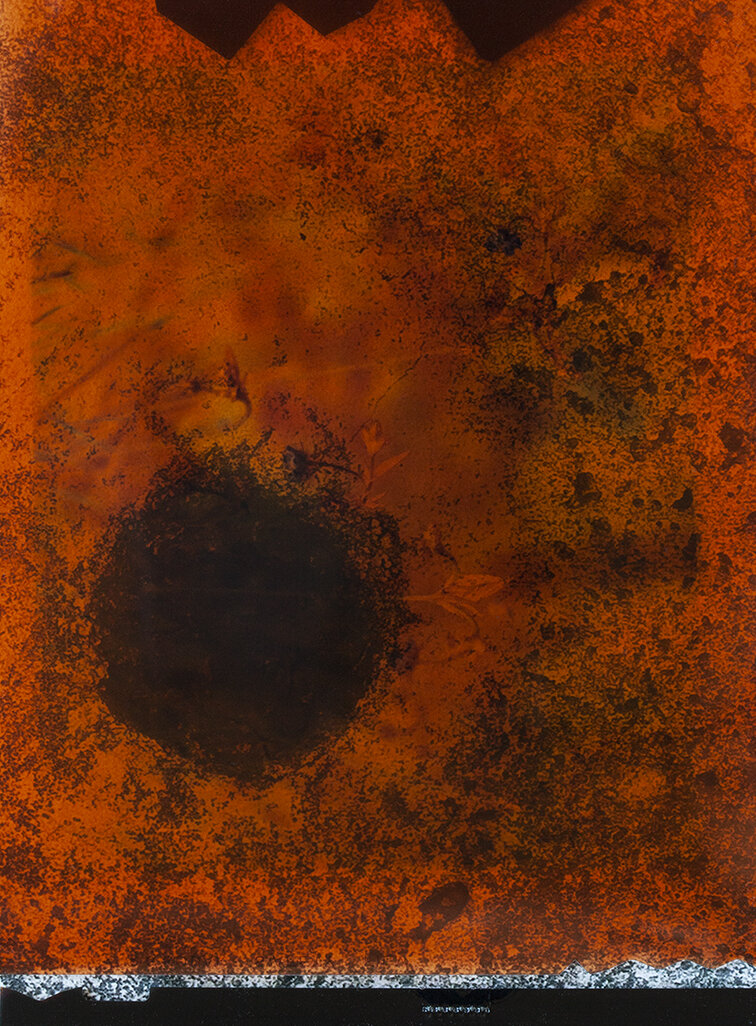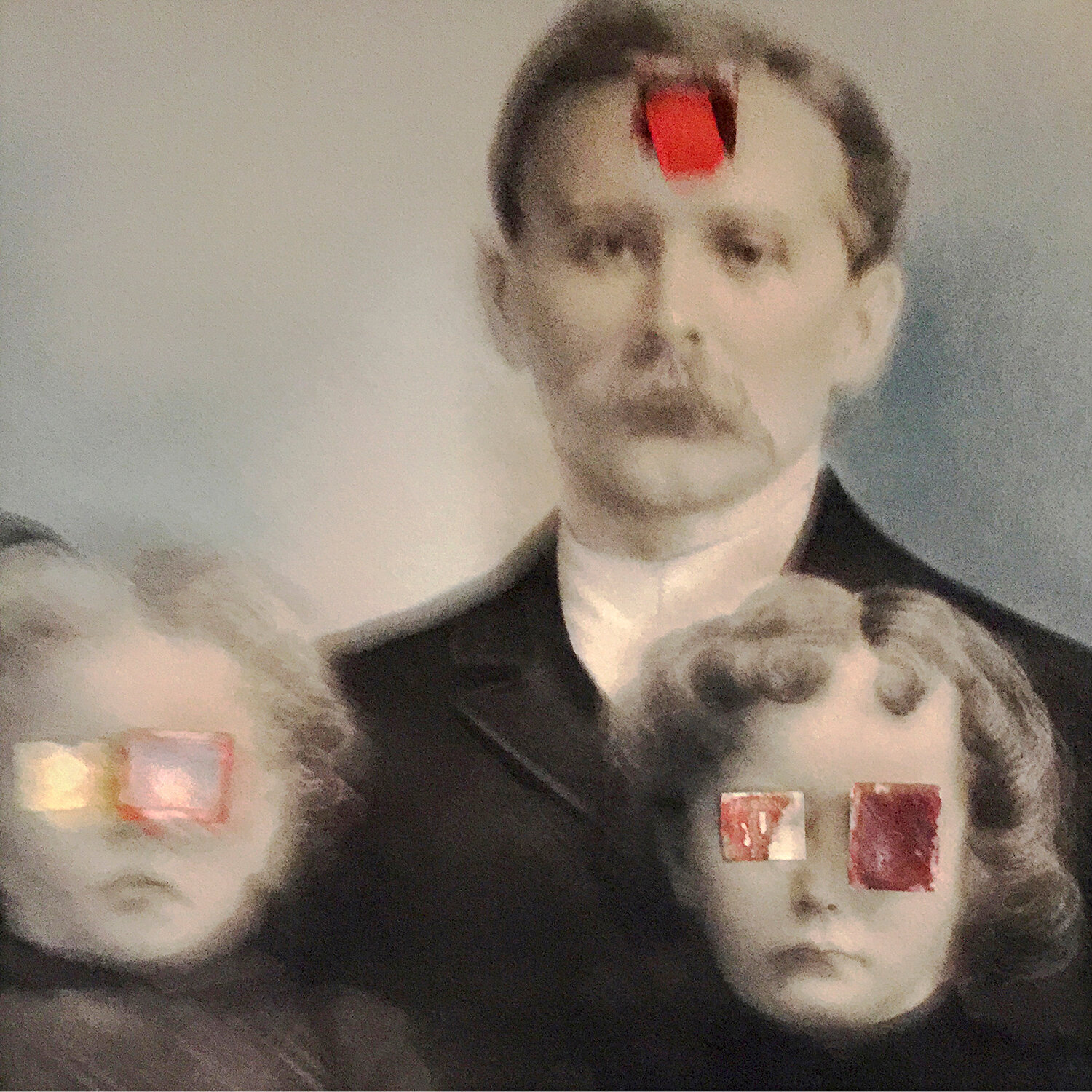Part One of my interview with Susan Goldstein describes her early years as student and her first job in photography as a staff photographer for Westword magazine. Part Two continues her story with the beginnings of her career as a landscape photographer, her introduction to digital color, and her most recent works created for Denver’s 2021 Month of Photography.
Susan Goldstein: from Undercurrents. Courtesy of the artist.
RJ: You shifted your work towards landscape in the late-80s, I think.
SG: I started the New American West in 1989 or 90. I was clueless, I titled it without knowing about Robert Adams [laughter]. It was Skip and Lisbeth Kohloff who, when they wanted to show some of my photographs at CPAC, said something to me like, “Well, I don’t think we better call it the New American West.” “Well, why not?” “Well, there's a photographer and his name is Robert Adams.” That’s when I realized how little I had been paying attention to the bigger world. In the beginning, the images that grew into the New American West were nothing more than me recognizing and photographing what was interesting to me. It didn’t take very long for me to realize that I was responding to human presence in our absence and making photographs with this as a common theme.
Susan Goldstein: from Undercurrents. Courtesy of the artist.
RJ: Can you explain that a little more—the human presence in our absence?
SG: That’s a phrase I’ve tried to work in when I try to write about the work. My feeling about the landscape is that it becomes infinitely more interesting, in a different way, when there’s some piece of human presence in the landscape. Something that is juxtaposed, that speaks to something that came before. That’s the thread that works its way both into the New American West and Undercurrents, which is the color landscape work. Undercurrents morphed into being about taking the temperature of the country by documenting “visual clues” I find in various communities.
Over the years the work has developed to include a few sub-categories of images, including a large group that are inherently political. There are no people in the images in Undercurrents. Every once in a while there’ll be a car, which implies a person in it, but what I’m seeking is the photograph of what we are without the humans in it.
Susan Goldstein: from Undercurrents. Courtesy of the artist.
RJ: I don’t want to get bogged down in technical matters, but New American West coincided with the introduction of digital photography. Was that something you adopted right away?
SG: The really early cameras were very expensive, and I waited until 2011 to buy my first full frame digital camera. But in that transition period, I was beginning to recognize some of the benefits of digital when it came to environmental issues and when it came to efficiencies. I can frankly say that when I hold one of my gelatin silver prints, it has a different kind of integrity to me. My old bias, I guess.
There is a mysterious and sort of magical element that I associate with film. Digital offers immediate gratification and confirmation, but film holds a different mystery and element of surprise. My experience as a photographer is very different when I shoot film instead of using my digital equipment.
Susan Goldstein: from Bending Time. Courtesy of the artist.
RJ: Concurrent with your landscapes you also make collages which are quite different, very delicate. They’re composed of disparate elements, yet there is obviously a unifying concept behind them. Can you explain what that is?
SG: The one thing that every one of the collages in this body of work has, is something that has to do with making or displaying a photograph. Whether it’s a photograph or slides, the edge of or an entire negative, a metal negative carrier for the enlarger, or a mask to put down on a piece of paper for a contact print, the unifying element is anything that’s related to photographs. It could be the little triangular photo mounts that people used in albums eighty years ago, turned upside down to show where the glue has pulled a bit of the paper off the album page. It can be any little visual element, and as long as there’s something that relates to photography, then I let myself go wherever the image takes me. END
Susan Goldstein, from the COVID-19 Inside Out Series, at Delaware and W 12th St, Denver, in March 2021 during Month of Photography. Courtesy of the artist.
Since we finished our interview, Susan has been busy creating images for Denver’s 2021 Month of Photography (MoP). The image above, from the COVID-19 Inside Out Series, is being featured at Delaware and W. 12th St as part of a billboard project sponsored by Save Art Space titled “In A Time of Change.”
She writes that the series “speaks to the universality of the human experience. At the end of the day we all watch the same sun set, we are all vulnerable to the ravages of COVID-19, and each of us has the ability to cooperate for the greater good to help make life easier for all of us.”
Susan Goldstein: Absence of Clarity, from The Ancestor Series. At Museo de las Americas. Courtesy of the artist.
Images from The Ancestors Series (above and in gallery below) are being shown at the Museo de las Americas in their MoP show titled “La Nueva Cara/The New Face,” on display March 26 – April 17, 2021. The series draws from Susan’s collection of old hand drawn, painted, and photographic portraits, some of them more than 150 years old, upon which she places three dimensional pieces and then rephotographs the assembly to create an in-camera composite image.
Susan Goldstein: from The Museum Series-9. At Alto Gallery. Courtesy of the artist.
Yet more of Susan’s new work, titled The Museum Series, is being shown at Alto Gallery’s Denver Collage Club exhibition, March 10-April 22, 2021. As she describes it, The Museum Series photographs (right and below) “are made at various museums around the country. The photographs document evidence of the human hand in the construction of the structures on the museum grounds ... including the museum buildings, parking structures, outdoor related spaces. ... At some point ... I started to see evidence of the humans who were involved in the building of the spaces ... and began to document them.”
Thanks for reading! Please leave comments or suggestions for future entries if you have them. And visit “ColoradoPhotoHistory” on Instagram or Facebook to view more images from the “Outside Influence” project. Next Post – Warhol in Colorado






